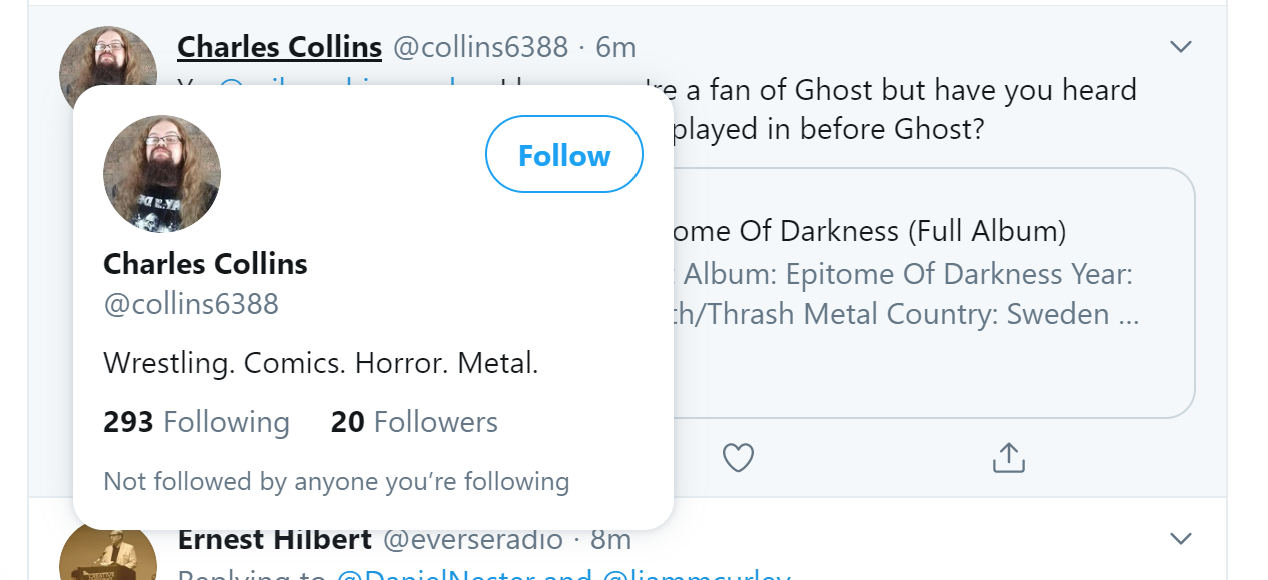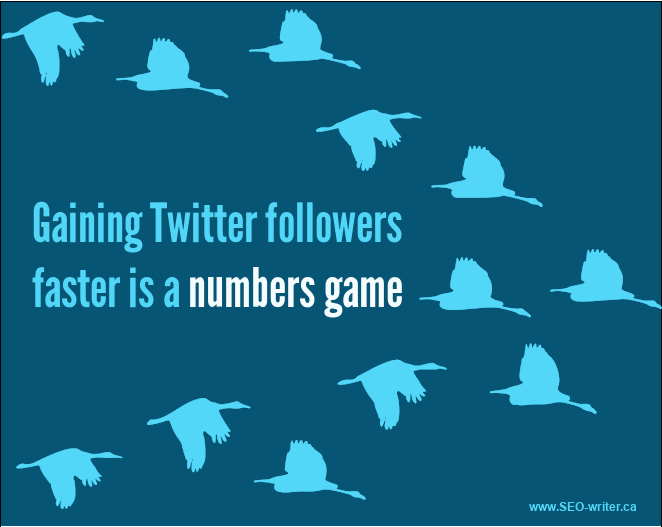If you want followers, it helps to follow other accounts with the right numbers. Yes, this is a Twitter math lesson.
In Part I of this article, we found that:
- It is possible to grow your following by 100 in a single day, but probably not every day.
- You need a strong account to grow your following by 100 in a single day.
- There is a basic Twitter follow strategy to use.
- You need something more to boost your Twitter followers faster.
That “something more” is to play the numbers. This part of the article gives you the step-by-step instructions on how to play those numbers successfully.
The number rules to maximize follow-backs
The interesting thing is that math can tell you whom to follow and whom to pass over. You might not want to invest the time to carefully study somebody’s profile and tweet history, but it is worth your time to look at a two numbers: how many people they follow, and how many followers they have.
Why?
Because some numbers can tell you how likely an account is to follow back. You see, not everybody follows back, even if you think you’d make the perfect match.
These numbers are all arbitrary cut-offs, but they make great guideposts. I will tell you later when and why to break these number rules.
Following counts
First, don’t follow anybody following fewer than 300 people. If they follow so few people, they probably won’t follow you back. Don’t waste your time. Even if you think they would be the perfect account to follow you, you can’t make them do so. If you see an account that just isn’t following anybody, don’t expect them to change their strategy for you.
If they do follow you back, and you are not tweeting exactly what interests them or engaging properly, there is a good chance they will unfollow you at some point. Your tweets will have high visibility among the other tweets of accounts they are following. If they follow over 300 accounts, it gets harder to keep track of everybody they follow and your tweets will blend in more.
Obviously, the more accounts they follow, the easier it is to blend in. If you tweet a lot, that could be a big deal. If you rarely tweet, it won’t make much of a difference.
Frankly, that 300 is pretty low if an account doesn’t have an obvious link to you. 500 is more reasonable for general interest, and 300 for very relevant accounts.
Followers count
Second, don’t follow anybody followed by fewer than 300 people. They clearly are not focused on following. Even if they follow 3,000 people, but have just 15 followers, they probably won’t follow back. Sure, they follow a lot of people, but it’s clearly not because they follow people back. It would more likely be as a fan of celebrities or curating tweets from thought leaders, the media or politicians. They are obviously not following accounts just for following them.
If you are a thought leader in their domain, then absolutely follow them. Otherwise, for your strategy to work, you need to find accounts that pay attention to who follows them and then follow back.
Follower/following ratios count, too
Third, and you might have guessed this, the follow ratio counts. If an account’s following and followers are very similar, there is a good chance they follow back. No matter what the topic of the account, 1,248 followers to 1,327 following means they follow back most accounts that follow them.
The bigger the difference between following and followers, the less likely they are to follow back. I cut them off at two-to-one for most types of accounts. If an account has 2,290 followers, but follows only 1,145, there’s a somewhat decent chance they’ll follow me back. After all, they follow back about half of their followers.
Of course, I have a big account of good quality. I assume I have a good chance of being in that half that they’ll follow. I figure I have an even bigger chance if it’s an account related to writing…but we can talk more about relevance in a little while.
If you are just starting out, and your account isn’t as strong, you might have less of a chance to be followed back. That’s a good reason to start by following accounts highly relevant to yours.
On the other end, their followers, I don’t have as specific a cut-off. An account with 300 followers and 3,000 following is, I figure, pretty likely to follow me back.
OK, that’s all fine in theory. But do these numbers work?
Yes. This approach grows Twitter following by 55-100 per day. Keep in mind that if you assume you are losing 25 followers per day, that means you actually gained 80-125 new followers per day. That’s a huge increase from the 10 new followers you can expect from the basic strategy.
It pays to play the numbers. It pays to play the numbers rules.
Except when it doesn’t.
When and why I break my own Twitter follow number rules
I break my own rules. Why would I do something like that?
These rules are based primarily on how likely an account is to follow back. So I adjust them for various situations.
I told you earlier that both quality and relevance of followers count, just as quantity does. So I adjust for those factors.
For instance, I am willing to follow people with slightly lower numbers and a much weaker follow ratio if they are writers or part of the writing community (editors, publishers, book illustrators, etc.)
These people are more likely to be interested in my posts, so they are more likely to follow back and less likely to unfollow me later on. They are more likely to share my content and interact with me. Plus, I am more likely to like what they share and to engage with their content.
In other words, the threshold for following me back is lower, and even if I get fewer follow-backs, these connections are worth more over the long run. For these people, I set the bar at a four-to-one ratio. And I will even follow them if they follow somewhat below 300 accounts, because I have seen that they will follow back my very strong and highly-relevant account.
On the other hand, I raise the bar on accounts that are less relevant topic-wise and content-wise. As I implied above, I don’t follow less-relevant accounts unless they follow 500 people or more, and even at that level I won’t follow accounts that follow back only half their followers.
You might wonder why I follow such accounts at all. If your business sells to the general public, then everyone is a potential client. Our big sales are for screenplays, memoirs and fiction novels. Our clients come from everywhere, from every demographic.
If you sell business-to-business or in a very specific geographic area, you’ll want to be a lot more focused and restrictive than I am.
In between the high-relevant and the unrelated accounts lie the many types of accounts that are not a perfect match, but do have obvious overlapping interests. For me, those include bloggers of all kinds (fitness, travel, lifestyle, marketing, business, personal finance, parenting, food, etc.), coaches, graphic artists, web designers, marketers, social media managers – anybody who interacts with writers as part of what they do. For them, the number rules fit pretty nicely.
But where can you find the Twitter accounts that match these number rules? That’s what we look at in Part III.











